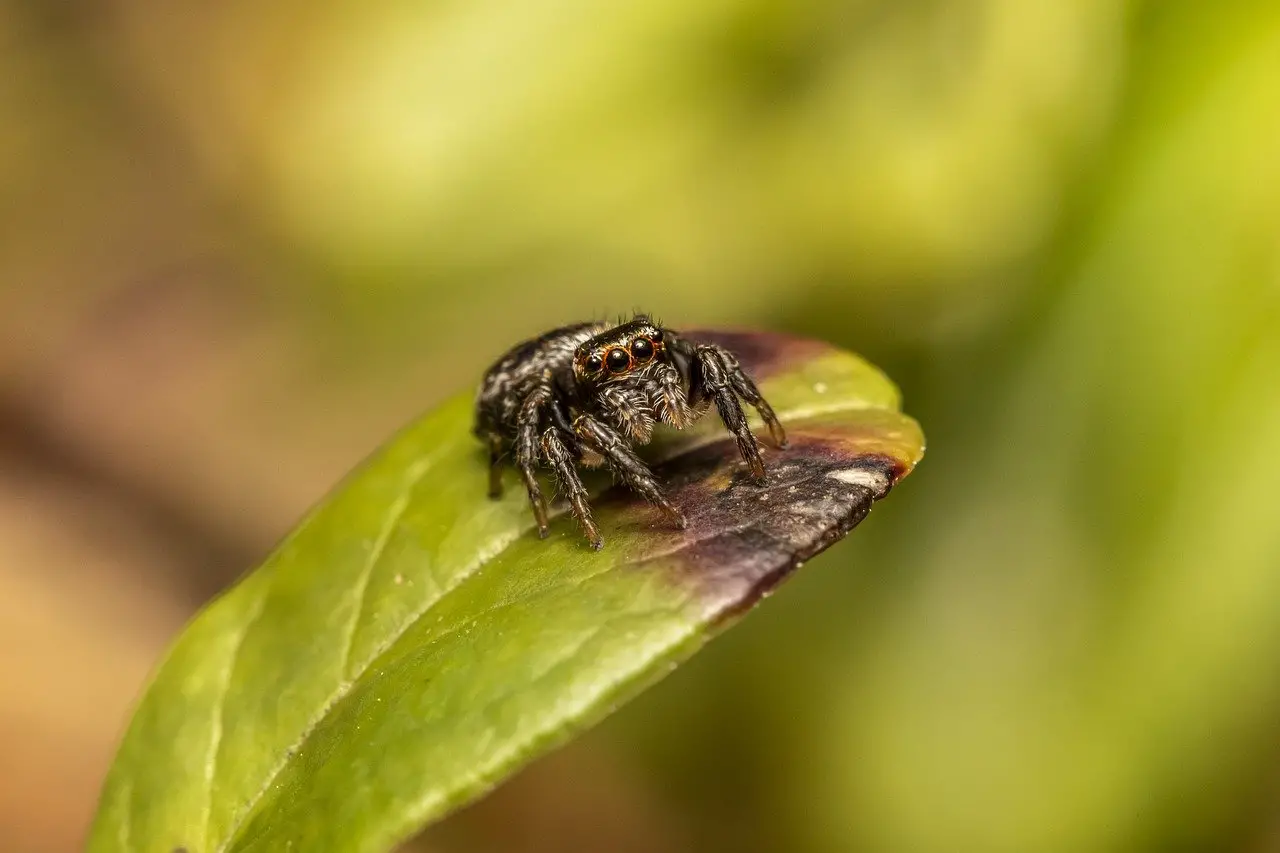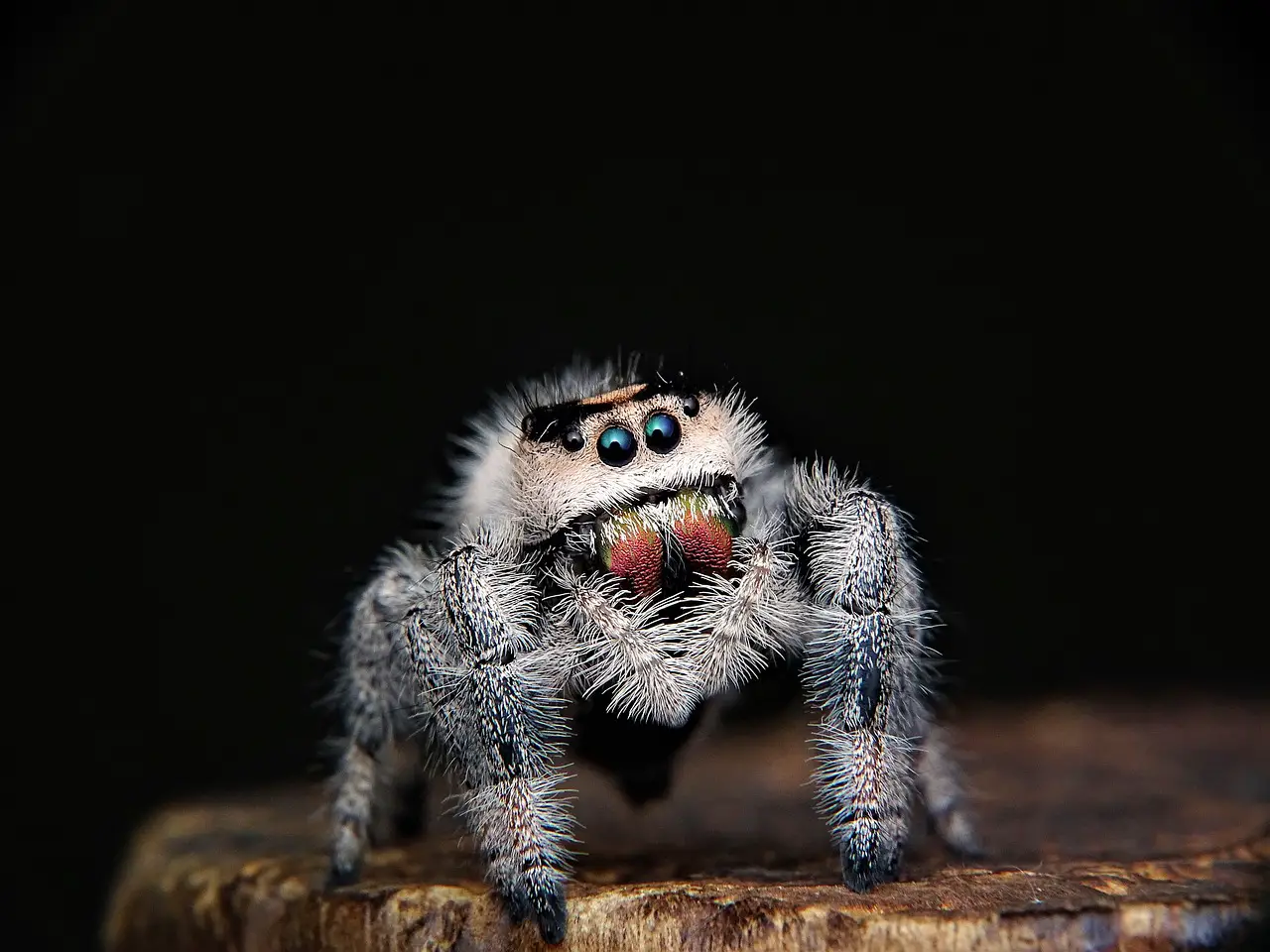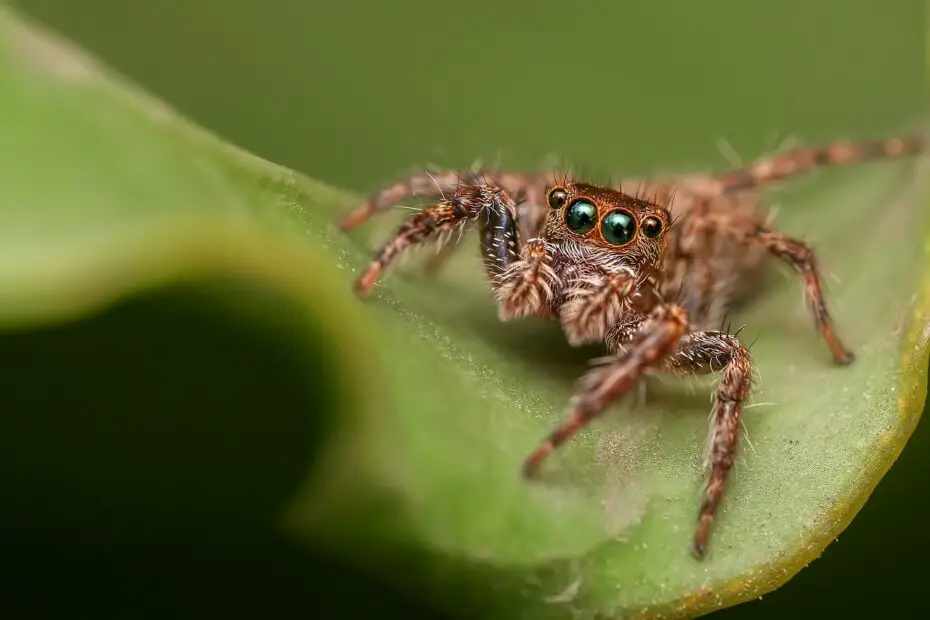When it comes to the world of arachnids, jumping spiders stand out as charismatic and agile creatures. These tiny hunters belong to the Salticidae family, boasting an astonishing array of colors and patterns. In this article, we will explore the jumping spider lifespan and delve into their captivating world. So, get ready to take a leap into the extraordinary life cycle of these acrobatic arachnids.
You may also want to read about how to keep jumping spiders.
Physical Characteristics of Jumping Spiders
Jumping spiders, with their compact bodies and large eyes, have a distinct appearance that sets them apart from other spider species. Their vibrant colors and intricate patterns make them quite a sight to behold. Ranging in size from a few millimeters to around one inch, jumping spiders exhibit an impressive level of agility, thanks to their muscular legs and keen senses.

Habitat and Distribution
Jumping spiders can be found in diverse habitats worldwide, from lush forests to arid deserts. They are highly adaptable and have successfully colonized various ecosystems across the globe. These versatile spiders are known for their ability to thrive in both natural and urban environments, often residing in vegetation, leaf litter, or even inside human dwellings.
Jumping Spider Lifespan
The lifespan of jumping spiders varies depending on several factors, including species, environmental conditions, and availability of resources. On average, jumping spiders live for about one to three years. However, some larger species may have a slightly longer lifespan, reaching up to five years in favorable conditions.
Factors Affecting Jumping Spider Lifespan
Several factors influence the lifespan of jumping spiders. Adequate nutrition, access to suitable mates, and a safe habitat play vital roles in ensuring their longevity. Additionally, external threats such as predators, extreme weather conditions, and human activities can significantly impact their lifespan and overall population.
Reproduction and Mating
Jumping spiders exhibit fascinating mating rituals that involve intricate courtship displays. Male spiders perform elaborate dances and showcase their vibrant colors to attract female partners. Once successful, the female lays eggs, which she protects until they hatch. This process marks the beginning of a new generation of jumping spiders.
Feeding Behavior and Diet
Jumping spiders are carnivorous hunters that possess remarkable vision and precise predatory skills. They use their exceptional jumping abilities to ambush unsuspecting prey, which primarily consists of insects. Jumping spiders employ a mix of stealth, patience, and lightning-fast reflexes to capture their meals and ensure their survival.
Behavioral Adaptations
Jumping spiders have evolved an array of fascinating adaptations that aid their survival. Their exceptional vision allows them to perceive details and detect movements with impressive clarity. They also possess an extraordinary ability to judge distances accurately, which is essential for their precise leaps. These adaptations make them highly efficient hunters and help them navigate their surroundings with agility.
Jumping Spiders as Predators
Jumping spiders are formidable predators, and their hunting techniques are nothing short of remarkable. With their keen eyesight and quick reflexes, they pounce on unsuspecting prey with unparalleled accuracy. Their versatile diet and effective hunting strategies make them valuable contributors to controlling insect populations in various ecosystems.
Interaction with Humans
Jumping spiders are known for their curious and inquisitive nature. Unlike some other spider species, they are generally not aggressive towards humans and do not pose significant threats. In fact, their vibrant colors and entertaining behaviors make them popular subjects for observation and photography among nature enthusiasts.

Fascinating Jumping Spider Species
The world of jumping spiders encompasses a vast array of species, each with its unique characteristics. From the colorful Peacock Spider with its intricate mating dances to the agile and elusive Zebra Jumping Spider, there is a captivating variety to explore. Discovering these diverse species opens up a world of wonder and appreciation for the intricate beauty of nature.
Tips for Observing Jumping Spiders
If you’re interested in observing jumping spiders in their natural habitats, a few tips can enhance your experience. Patience, a keen eye, and a macro lens can help you spot these agile arachnids. Providing a suitable habitat by creating a small garden or offering potted plants can attract jumping spiders to your surroundings, allowing for closer observations.
Conservation of Jumping Spiders
Preserving the natural habitats that jumping spiders rely on is crucial for their continued survival. Conserving biodiversity, protecting ecosystems, and raising awareness about the importance of these fascinating creatures are essential steps towards ensuring their long-term existence. Everyone can contribute by supporting conservation organizations and promoting sustainable practices.
Conclusion
The jumping spider lifespan takes us on a journey of discovery, highlighting the resilience and adaptability of these captivating arachnids. From their vibrant appearance and impressive hunting skills to their intricate courtship displays, jumping spiders offer us a glimpse into the fascinating world of arachnid behavior. By understanding their lifespan and the factors that influence it, we can appreciate and protect these incredible creatures for generations to come.
FAQ Section
1. Are jumping spiders venomous and dangerous to humans? Jumping spiders do possess venom, but they are generally not considered dangerous to humans. Their venom is primarily used to immobilize their prey and is not potent enough to cause significant harm to humans. It is advisable to avoid handling jumping spiders to prevent accidental bites.
2. Can jumping spiders jump long distances? Despite their name, jumping spiders do not jump vast distances like fleas or grasshoppers. Instead, they use their powerful leg muscles to make precise and calculated leaps to capture prey or move between surfaces.
3. Do jumping spiders build webs? Jumping spiders are not known for building intricate webs like other spider species. Instead, they rely on their exceptional vision and hunting skills to capture prey actively. Some species may create silk retreats for protection and molting.
4. Can jumping spiders recognize individual humans? Research suggests that jumping spiders may have the ability to recognize individual humans. Their acute vision allows them to perceive and remember specific features, potentially leading to recognition over time.
5. How can I create a welcoming habitat for jumping spiders in my garden? To attract jumping spiders to your garden, you can provide diverse plant life, including flowering plants and shrubs. Creating small structures like rock piles or log piles can also offer shelter for these arachnids. Avoid the use of pesticides to protect the overall ecosystem and ensure a healthy environment for jumping spiders.
